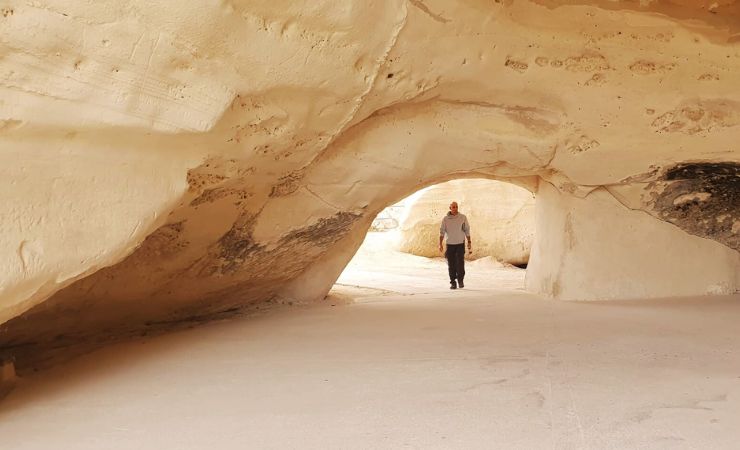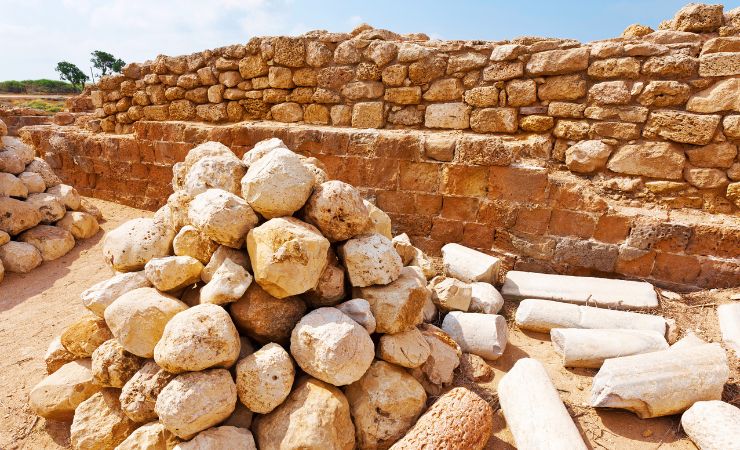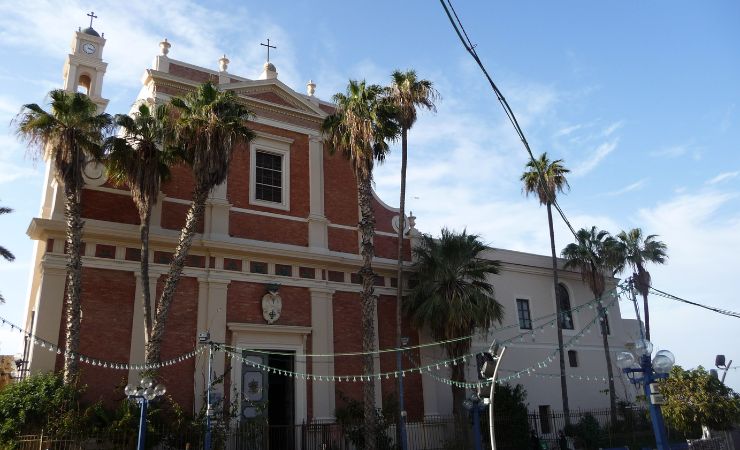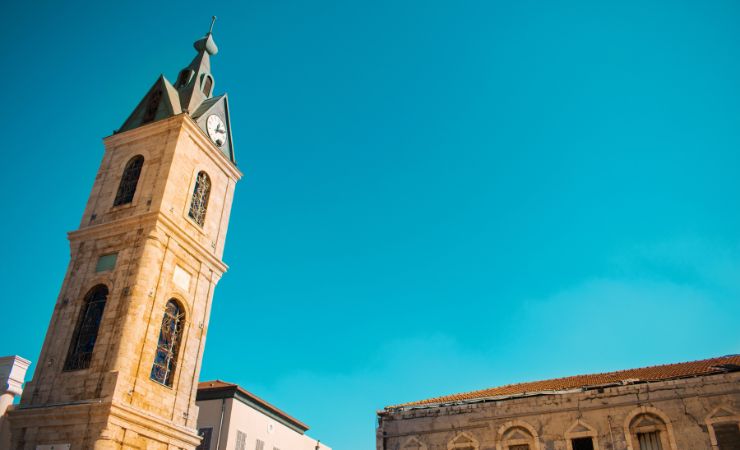Maresha: From Edomite City to Hasmonean Stronghold
Tel Maresha is one of those places that quietly surprises you. On the surface, it looks like just another hill in the Judean countryside—but underneath, there’s a whole world carved into the rock. From ancient homes and workshops to burial caves and pigeon towers, this site tells the story of a city that was once full of life, trade, and culture.

Location
Maresha National Park is located in the Judean Lowlands (Shfela), the park is roughly 40 kilometers southwest of Jerusalem.
Biblical context
Tel Maresha, known in biblical times simply as Maresha, holds a notable place in the Hebrew Bible. It is first mentioned in the Book of Joshua as part of the territorial allotment to the tribe of Judah:
“This is the inheritance of the tribe of the children of Judah according to their families… And Keilah, and Achzib, and Mareshah”
— Joshua 15:20, 44
During the reign of King Rehoboam, Solomon’s son, Maresha was fortified as part of a strategic initiative to strengthen Judah’s defenses:
“Rehoboam lived in Jerusalem and built up towns for defense in Judah: Bethlehem, Etam, Tekoa, Beth Zur, Soco, Adullam, Gath, Mareshah, Ziph…”
— 2 Chronicles 11:5–8
Maresha also served as the backdrop for a significant military encounter. King Asa of Judah faced an invasion by Zerah the Cushite, commanding a vast army. The ensuing battle took place in the Valley of Zephathah near Maresha, where Asa’s forces achieved a decisive victory:
“Zerah the Cushite marched out against them with an army of thousands upon thousands and three hundred chariots, and came as far as Mareshah. Asa went out to meet him, and they took up battle positions in the Valley of Zephathah near Mareshah.”
— 2 Chronicles 14:9–10
The prophet Micah, originating from the region, referenced Maresha in his prophecies concerning the judgment and future of Judah:
“I will bring a conqueror against you, inhabitants of Mareshah. The glory of Israel will come to Adullam.”
— Micah 1:15
The Sites History
The history of Maresha, particularly during the Hellenistic and Hasmonean periods, reveals a complex story of cultural integration and forced religious conversion. Maresha was part of the territory known as Idumea (Edom), after the Edomites migrated into the region following the fall of the Kingdom of Judah in the 6th century BCE.
Maresha Under Edomite Rule
By the Hellenistic period, Maresha had become a flourishing city in Edom, where a mix of different cultures—Edomite, Greek, and Phoenician—coexisted. The city’s economy thrived due to its strategic position along key trade routes and its agricultural production, notably olive oil. The subterranean cave systems, including columbaria (pigeon houses), are remnants of this vibrant period.
Conquest by the Hasmoneans and Forced Conversion
In 125 BCE, John Hyrcanus I, leader of the Hasmonean dynasty, conquered Maresha during his campaign to expand Judean territory. His conquest of Idumea is one of the most significant moments in Jewish history, as it led to the forced conversion of the Edomites to Judaism. Josephus, the Roman-Jewish historian, records that Hyrcanus offered the Edomites the choice to either adopt Jewish customs and laws, including circumcision, or leave their land.
This mass conversion, one of the few recorded instances of forced conversion to Judaism, reshaped the religious landscape of the region. The Edomites (now referred to as Idumeans) became fully integrated into Jewish society, with some, like Herod the Great who was the grandson of a convert, later rising to significant positions of power.
The conversion was part of Hyrcanus’ broader campaign to consolidate power and unify his territories under Jewish religious and political rule. However, tensions between the Idumeans and other Jewish groups persisted, particularly as many viewed the forced conversions with skepticism.
Decline of Maresha
After its conquest, Maresha declined as a major city, eventually overshadowed by Beit Guvrin during the Roman period. By the time of the Bar Kochba revolt in 132–135 CE, Maresha had been largely abandoned, and Beit Guvrin took its place as the central city of the region.
Inside the Maresha National Park
Tel Maresha is renowned for its extensive network of underground caves and installations, reflecting the ingenuity and daily life of its ancient inhabitants. These subterranean complexes served various purposes, from industrial activities to burial practices.
Columbaria (Dovecotes)
One of the most striking features at Tel Maresha is the presence of numerous columbaria—structures with niches carved into the walls to house pigeons. These birds were raised for their meat, droppings (used as fertilizer), and for ritual sacrifices. Some columbaria at the site contain hundreds of niches, showcasing the scale of this practice.
Olive Presses
The production of olive oil was a significant industry in Maresha. Archaeologists have uncovered at least 22 olive press installations within the caves, indicating a well-developed process of olive oil extraction. The process involved crushing olives using stone rollers and pressing them to extract oil, which was then collected in storage vessels.
Burial Caves and the Sidonian Cave
The burial practices at Maresha are exemplified by the elaborate tombs carved into the soft chalk. The Sidonian Cave, in particular, stands out for its vibrant wall paintings depicting mythological creatures and inscriptions in Greek. This cave served as the family tomb for Apollophanes, the leader of the Sidonian community in Maresha.
Subterranean Industrial Complexes
Excavations have revealed complex underground systems comprising cisterns, quarries, and various rooms that appear to have been used for industrial activities. These complexes highlight the advanced engineering and organizational skills of the inhabitants.
Residential Caves and Cisterns
Beyond industrial use, many caves served as living spaces, complete with installations like water cisterns carved beneath the residences. These cisterns collected rainwater through a network of channels, ensuring a reliable water supply.
Greek Inscriptions and Ostraca
A wealth of inscriptions and ostraca (pottery shards with writing) have been discovered at Maresha, providing insights into the multilingual and multicultural nature of the city. These artifacts include administrative records, personal letters, and commercial documents written in Greek and Aramaic.
Apollophanes Cave: The Sidonian Burial Cave of Maresha
Among the many subterranean wonders of Tel Maresha, the Apollophanes Cave, also known as the Sidonian Burial Cave, stands out as a remarkable testament to the city’s multicultural heritage during the Hellenistic period.
A Painted Legacy
This cave is unique in Israel for its vibrant wall paintings from the Hellenistic era. The frescoes depict a variety of real and mythical creatures, such as a crowing rooster to ward off evil spirits, the three-headed dog Cerberus guarding the underworld, and a red phoenix symbolizing rebirth. These images reflect the diverse cultural influences present in Maresha at the time. Honoring a Community Leader
The cave served as the family tomb for Apollophanes, son of Sesmaeus, a prominent figure who led the Sidonian community in Maresha for 33 years. An inscription commemorates him:
“Apollophanes, son of Sesmaeus, thirty-three years chief of the Sidonians at Marisa, reputed the best and most kin-loving of all those of his time; he died, having lived seventy-four years.”
This epitaph provides insight into the social structure and the esteem held for community leaders in Maresha.
A Glimpse into Personal Lives
One of the cave’s inscriptions offers a rare, intimate look into personal relationships of the era:
“There is nothing left I could do for you, or anything that will give you pleasure. I lay with another but I love you, the one most dear to me… Do not bang on the wall, the noise is heard inside. We will signal each other with movements. Let this be our signal.”
This poignant message suggests that the tomb may have served as a discreet meeting place, highlighting the multifaceted use of such spaces beyond their primary funerary purpose.
Nearby Sites
Beit Guvrin Amphitheater – Just a short walk from Tel Maresha, this Roman amphitheater once seated thousands and hosted gladiator battles and public events.
Lachish National Park – One of the most important cities of the Kingdom of Judah, famously besieged by the Assyrians. The ramp built by Sennacherib is still visible.
British Park (Park Britannia) – A peaceful forested area perfect for a scenic drive, hike, or picnic. It also includes lookout points and hidden ruins among the trees.
Stalactite Cave Nature Reserve (Avshalom Cave) – About 40 minutes’ drive, this underground cave is filled with dramatic stalactite and stalagmite formations.



